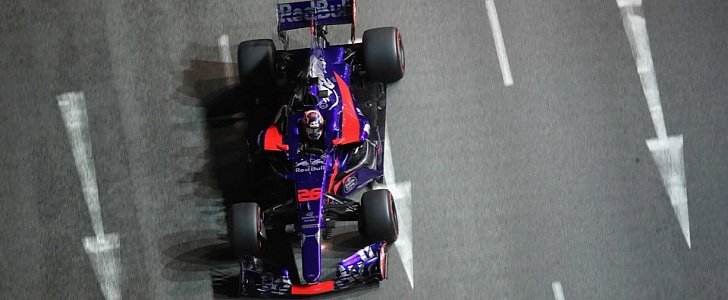The year 2017 brought changes to the king motorsport, huge changes that don’t include reigning champion Nico Rosberg stepping down from his high horse, thus allowing Lewis Hamilton to get his mojo back. Last year saw every car on the grid get faster, which in turn saw the FIA update every circuit on the calendar to suit the more dramatic-looking racecars.
This newfound fastness came as a result of an increase in width, tire size, bigger diffusers, and lots of small aerodynamic trickery such as the leading edge of the barge boards. At the same time, the technical rules allow the teams to go into the grey area of the rulebook, thus giving birth to those lil’ T-shaped wings mounted between the shark fin and rear wing.
But this is 2018, and the FIA decided to outlaw T-wings and shark fins. This is one of three technical changes that will alter the look of the cars in the upcoming season, and to some extent, their drivability. So what do we get instead? According to Formula1.com, “the engine cover still features a fin of sorts, but nothing like the huge swathes of carbon fiber we saw in 2017.”
The second change is the suspension. Or more to the point, the trick set-ups with a small link in the front suspension connected to the upright. The design, which was used by Red Bull and Ferrari, is believed to allow the car’s ride height to be varied depending on steering angle, which over the course of the lap, translates into superior aerodynamic performance.
As for the final and most polarizing change, you’d better brace yourselves for cockpit protection. Known as Halo but more akin to an oversized toe strap of a flip-flop, the ungainly piece of carbon fiber improves “driver safety in the event of an accident.” And being an add-on part, the Halo made the FIA increase the minimum weight of the cars by 6 kilograms.
On that note, there’s some advantage to gain from the Halo, as the technical rules for the 2018 Formula 1 season mandate the core design of the device. To this effect, “there will be some scope for teams to modify its surface, so don’t be surprised to see a variety of small aero devices adorning this new addition.”
But this is 2018, and the FIA decided to outlaw T-wings and shark fins. This is one of three technical changes that will alter the look of the cars in the upcoming season, and to some extent, their drivability. So what do we get instead? According to Formula1.com, “the engine cover still features a fin of sorts, but nothing like the huge swathes of carbon fiber we saw in 2017.”
The second change is the suspension. Or more to the point, the trick set-ups with a small link in the front suspension connected to the upright. The design, which was used by Red Bull and Ferrari, is believed to allow the car’s ride height to be varied depending on steering angle, which over the course of the lap, translates into superior aerodynamic performance.
As for the final and most polarizing change, you’d better brace yourselves for cockpit protection. Known as Halo but more akin to an oversized toe strap of a flip-flop, the ungainly piece of carbon fiber improves “driver safety in the event of an accident.” And being an add-on part, the Halo made the FIA increase the minimum weight of the cars by 6 kilograms.
On that note, there’s some advantage to gain from the Halo, as the technical rules for the 2018 Formula 1 season mandate the core design of the device. To this effect, “there will be some scope for teams to modify its surface, so don’t be surprised to see a variety of small aero devices adorning this new addition.”











